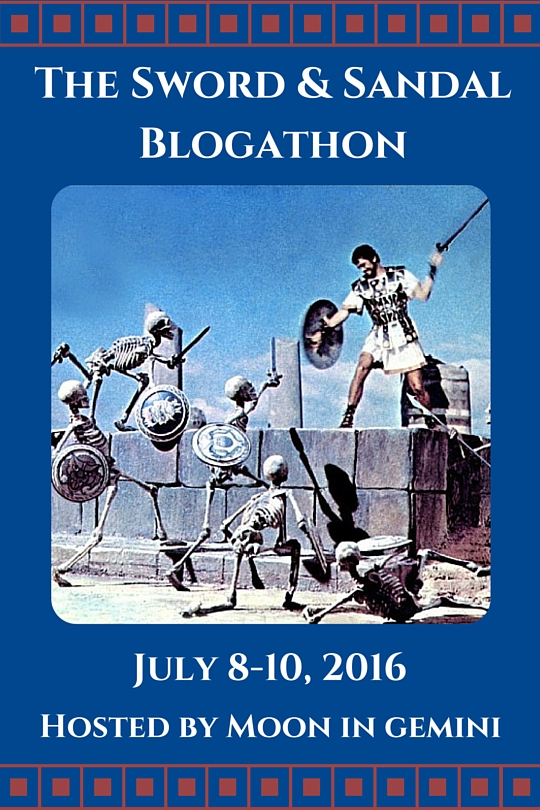The Canon in the Early Sound Era

This is the latest in a series of posts about the relationship between the Bible, the idea of canonicity and film.
The start of the sound era was a time of great development and innovation, but it saw a severe drop off in the production of Bible films. The early silent era had seen around six and a half Hebrew Bible films being made a year - albeit mainly short films. This dropped in the second half of the silent era to around four and a half films per year. But between 1930 and 1948 this dropped to just one. In the entire period only nineteen films based on the Old Testament (and around six films based on the Gospels) were made and none of these were major releases by the main studios.
It can be argued, of course, that the cut off point chosen for the end of this era skews the data somewhat. After all this period is artificially constructed and the end point was chosen as the year before DeMille's big studio mega hit Samson and Delilah (1949). But something about the release of that film feels so different from the films made in this period, and from that point on, the rate of production of Bible films picked up significantly.
Why might this large drop off in production occurred. Well firstly the financial circumstances during this period were very challenging. The film industry in Europe had not really covered from the First World War. The start of the thirties witnessed the Great Depression in America and similar economic troubles in much of Europe, and then came the Second World War with all its problems. Film production went down across the board, but large-scale, spectacular films like adaptions of the Bible tended to be were doubly problematic.
The other restriction that really choked the flow of films based on the Bible in this era was America's production code and similar types of censorship in other countries. Amongst the restrictions were bans on showing the face of Jesus - little wonder then that the majority of Jesus films made during this era came from Mexico. It is also possible that the climate at the time was such that depicting other major biblical figures was also frowned upon.
The most well-known Jesus film of this era, which is still relatively obscure is Julien Duvivier's 1935 film Golgotha (Behold the Man). However as David J. Shepherd points out Duvivier's Jesus is still fairly silent despite the fact that, by then, the voice cinematic Jesus should have been liberated.1
A quick look at the titles made during this era is also instructive - even the films that were made were far from mainstream. There were, of course, a few remakes [Joseph and His Brethren (1930), Joseph in the land of Egypt (1932), Samson (1936)] a few of the old favourite stories sneaking through [Queen Esther (1948), Potiphar's Wife (1930)] but the other films are markedly different from what we tend to think of as Bible films today.
The Italian film The Ten Commandments (1945) featured ten stories illustrating each of the commandments.2. On a similar theme Forgotten Comandments (1932) recycled most of its Moses content from DeMille's 1923 film. Lot in Sodom (1933) was an experimental/avant garde film. Father Noah's Ark (1933) was animated. Good Morning, Eve! (1934), featured songs as did The Eternal Jew (1933), which featured a rabbi telling the story of Abraham to some children.3
Not dissimilar in this respect is The Green Pastures (1936) which rather than attempting to depict the various events as they may have occurred portrays them as imagined by children. The film is perhaps the most well known Old Testament film of the era so it's interesting that it takes an alternative approach to canonicity, often with an emphasis on oral transmission rather than text. In particular is the episode featuring an unspecified prophet. The prophet is a composite of various characters from the Bible. His existence as a type deemed more importance than his particular character and correspondence with a particular person. More interestingly, given that these are events reconstructed from children's minds, is the possibility that the prophet's name is unknown because the child/children in question do not have the same degree of familiarity with the later parts of the Old Testament canon than they are with the earlier parts.
Incidentally whilst composing this post I've heard word that the 1948 Queen Esther film is due to be released on DVD in the run up to this Christmas by the Cathedral Films Preservation Project. More on that in due course.
====
1 - Shepherd, David J "Final Reflections, Silence and Spectacle: the Cinematic Jesus from Kirchner to Duvivier" in "The Silents of Jesus in the Cinema (1897-1927)"; ed. Shepherd, David. p.276
2 - Alan Gevinson "Within Our Gates: Ethnicity in American Feature Films, 1911-1960" p.318
3 - C. Celli, M. Cottino-Jones, "A New Guide to Italian Cinema" p.50
Labels: Canon and Bible films




















